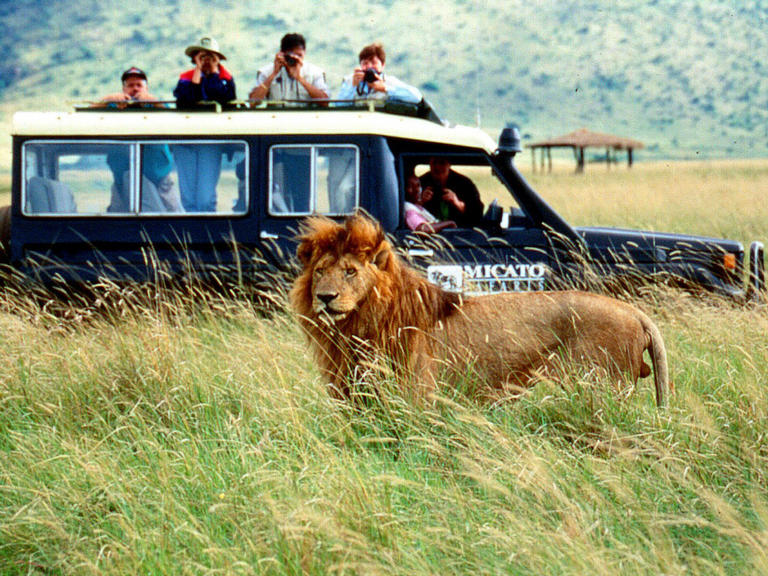We boil at different degrees - Ralph Waldo Emerson
Like this sunflower in a field of maize, being in Africa can make you feel like the odd one out. I would not characterize this as a bad thing, if anything it adds another dimension to your experience.
On my first day at Haydom, I met a large number of the other volunteers, medical students and guests at Haydom Lutheran Hospital (HLH). Unsurprisingly (at least to me), I was something of a novelty. Where as most of the volunteers are from Europe (especially Norway), here was this lone Australian. Not a single person knew where I was from without me telling them. First I was English, then American (someone even spread a story round that I came from a ranching family in Texas) and all sorts of places in between.
The Dongobesh Experience
As much as I was a novelty to the HLH community, as a foreigner (Kiswahili: Mzungu) you stand out in general in Africa. On my second day in Haydom, the Egenberg Family (Signe, Art and Lars) offered for me to go with them to visit some of their friends in Dongobesh. However, the car only had space for four and there were six of us going.
What were we going to do?
The answer was simple, two of us would ride in the tray-back/trailer of the truck. The two lucky volunteers for the first part were myself and Lars, as we were the youngest. So we set off for our two hours journey to Dongobesh, holding (or clinging) onto to the truck's rollcage.
As would come to no surprise too many, the roads were rough and full of holes. And so if you ever find yourself in the back of a truck, on dirt roads anywhere in the world, my advice would be stand up as much as you can. This saves you a lot of pain down the track. The downside is that you might get flipped off the back of a truck if you hit anything. So weigh up the pros and cons.
So here we were, a pair of Mzungu on the back of a truck; and quite possibly the oddest thing around. As we drove along the road, through towns and farmland, people would point, wave and look with almost a sense of shock. It's not uncommon for many Africans to ride on the back of a truck, but clearly Lars and I brought a different aspect to a common thing.
In Dongobesh, we met the Egenberg's friends, who are both highschool teachers (one teaching English, the other Kiswahili). It was at their house that I had my first family cooked meal in a Tanzanian household. And what can I say other than that the food was superb, and was all from produce (e.g. Icrops & animals) right in their very yard.
Whilst I was at their house, their kids inevitability caught a glimpse of my iPhone (I was using it to take photos). Being curious little critters, they wanted to look at it, which I happily obliged. The two boys loved it and were constantly battling over who's go it was to use it. The most amazing thing I saw was that, a four and a seven year old who had never seen a touch screen phone before, who couldn't speak or read english, pick an iPhone up and within the space of 30 minutes know who to navigate it. A win to Apple I guess for intuitive design. Somewhat to my angst, the only game I had on my iPhone Zombie Highway, which basically involves running over and shooting Zombies. I thought it was probably not a good lesson for young kids that the way to succeed is to see how many bodies you can run over. I'm sure others would argue however, that everyone, including man, woman and child, needs to be ready for a Zombie Apocalypse.
Eventually we had to say our goodbyes and make our way back to Haydom. But, not before we took a walk through the fields outside of Dongobesh (where the above photo was taken). During this walk, we had the opportunity to see how things had been done for centuries, but also the progress being made towards a better future (the construction of a small dam for irrigation purposes).
The Lesson
Sometimes being the odd one out can be challenging, and leave you of unsure about where you fit in. The obvious truth however, is that we are all different. We each have different beliefs, personalities and perspectives.
Though we may be different, like the sunflower in a field of maize, we share the same soil, the same water, the same energy. We interact with and are molded by those around us. We may be separate in appearance, but connected by nature. For we each have something to add, and our individual oddity does not weaken us, but makes us stronger.
We become not a melting pot but a beautiful mosaic. Different people, different beliefs, different yearnings, different hopes, different dreams. - Jimmy Carter












































